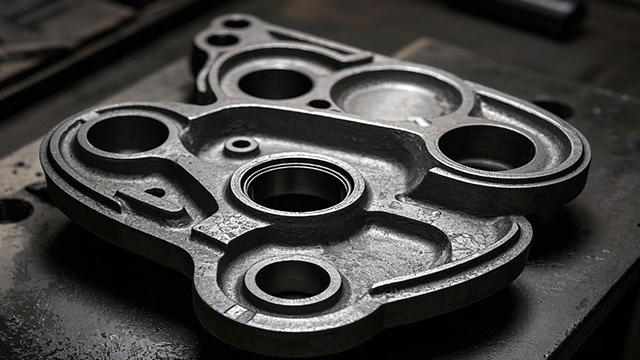What is a common pattern material for investment casting?
2025-01-08 14:52:19 hits:0
Investment casting, also known as lost-wax casting or precision casting, is a widely used casting process in aviation, automotive, machinery, and other fields. The core of this process lies in using a meltable pattern material (typically wax or plastic) to create the original model. Refractory material is then applied around the model to form a mold shell. Finally, by melting and removing the pattern material, molten metal is poured into the mold shell. After the metal cools and solidifies, the final casting is obtained. Investment casting is favored for its high precision and ability to produce complex-shaped castings.
In previous articles, Tiegu introduced in detail what is investment casting and advantages of Investment casting.You can click to view them.
Today, this article focuses on the common mold materials used in investment casting.
I. Overview of Common Materials
The mold in investment casting is a critical component of the precision casting process, and the choice of material directly affects the mold's lifespan and the quality of the casting. Here are several common mold materials used in investment casting and their characteristics:
- Metal Materials
Metal materials are one of the most commonly used in investment casting mold material, known for their excellent wear resistance, corrosion resistance, and high-temperature tolerance. Common metal materials include:
- Cast Iron: With good wear resistance, corrosion resistance, and high-temperature tolerance, it is suitable for manufacturing various molds such as die-casting molds, injection molds, extrusion molds, and drawing molds.
- Alloy Tool Steel: Featuring high hardness, high strength, good wear resistance, and thermal stability, it is suitable for small-to-medium batch production and products with higher requirements.
- Carbide Steel: With high hardness, high strength, strong wear resistance, and high corrosion resistance, it is suitable for manufacturing molds with high-precision requirements.
- Plastic Materials
Plastic materials have excellent processability, wear resistance, and strength, making them suitable for manufacturing large and complex molds. Common plastic materials include:
- Polyethylene
- Polystyrene
- Polycarbonate
- Ceramic Materials
Ceramic materials have high hardness and good wear resistance, can withstand high temperatures and high pressures, and are suitable for manufacturing molds used under high-temperature and high-pressure conditions.
- Silicone Materials
Precision casting mold silicone is a two-component addition-cure silicone material with excellent fluidity, high-temperature resistance, and thermal stability. Its main characteristics include:
- Not limited by product thickness, capable of deep curing
- Excellent high-temperature resistance, withstanding temperatures of 300-500°C
- High tensile and tear strength, allowing multiple molding cycles
- Excellent electrical and chemical stability, resistant to water, ozone, and weathering aging
III. Basis for Material Selection
When selecting materials for investment casting mold, the following factors need to be considered:
- Operating Temperature
The operating temperature of the mold is an important basis for material selection. High-temperature molds require higher heat resistance and thermal stability.
- Mechanical Properties
The mechanical properties of materials, such as strength, hardness, and plasticity, directly affect the mold's lifespan and the quality of the casting.
- Processability
The processability of materials, including viscosity (or fluidity), ash content, and coating properties, affects mold manufacturing efficiency and casting surface quality.
IV. Application Fields
Investment casting tooling are widely used in multiple fields, including but not limited to:
- Automotive Component Manufacturing
- Engineering Machinery Castings
- Precision Machining
- Medical Equipment
V. Precautions
When using investment casting mold material, pay attention to the following points:
- Ensure that the material is free of impurities to avoid affecting the curing effect.
- Select appropriate materials and processing methods based on specific process conditions.
- Regularly inspect and maintain the mold to ensure it is in good condition.
- By reasonably selecting and using mold materials for investment casting, the quality and production efficiency of castings can be effectively improved.
The choice of suitable investment casting wax pattern is crucial, as it directly relates to the quality and production efficiency of castings. Based on this, Tiegu , as a professional casting enterprise, has the capability to provide various types of custom castings. Whether in the automotive, piping, engineering machinery, agricultural machinery, and other fields, we can provide comprehensive services from mold design to finished product manufacturing according to customer needs. If you have any needs for custom investment casting or other processes, please contact us directly. Our professional team will provide you with personalized solutions and quality services.


 en
en  fra
fra  de
de  ru
ru  gle
gle  th
th  ara
ara  it
it  jp
jp  kor
kor  zh
zh 


